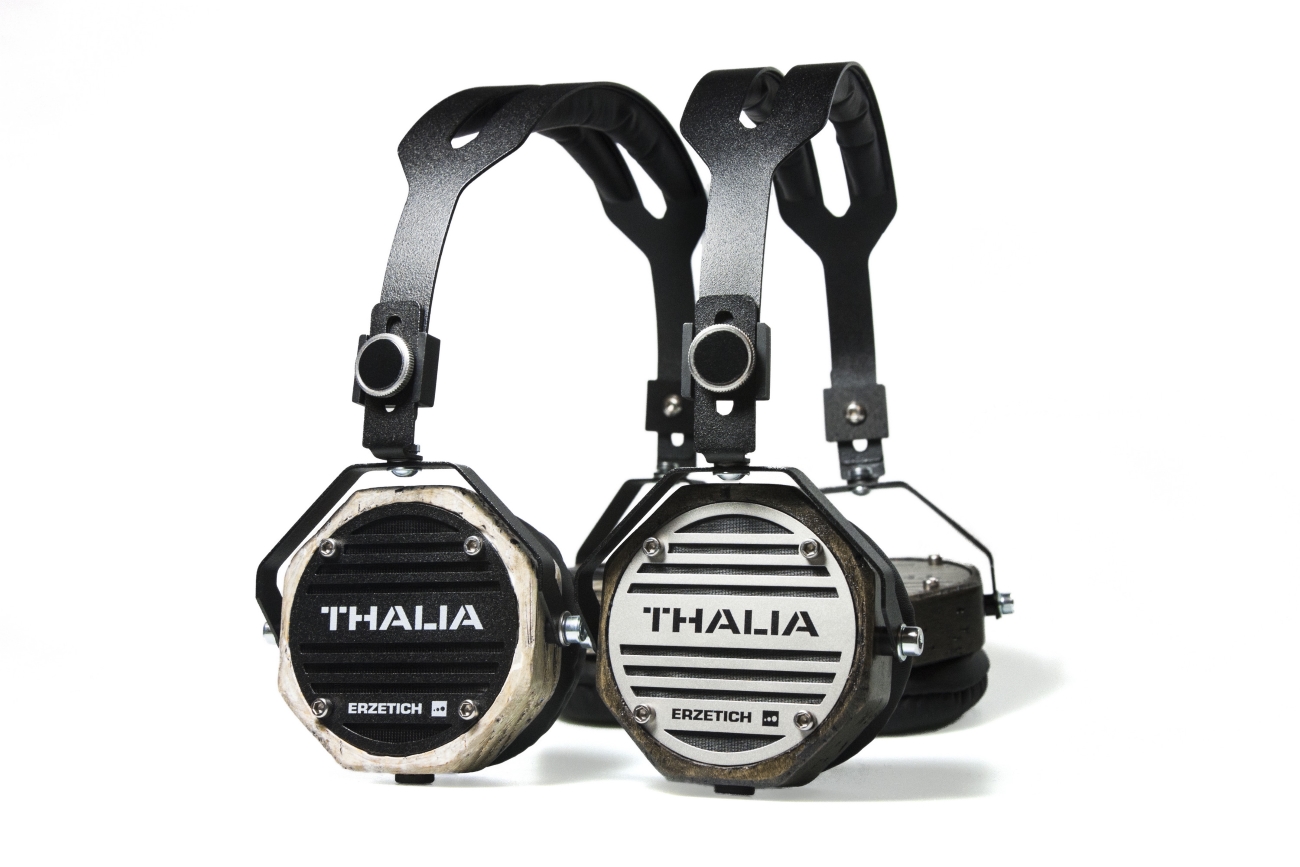Erzetich Thalia Review – World’s First Handcrafted Portable Headphones

My Video review:
Disclaimer: Erzetich Thalia were sent to us as a review sample in exchange for our honest opinion. We thank team Erzetich Audio for this opportunity!
Blaž Erzetič never ceases to amaze me. First, he decides to make some really mean and different sounding headphone amps from a sea of me too products. I reviewed the smallest one called Bacillus and was mighty impressed by its nimble and hard-hitting nature. His next logical move was releasing two amazing hand-crafted headphones that again stood-out from the crowd. First one was called Mania that carries huge 50 mm titanium coated dynamic drivers, it’s a semi-open design that should work with almost any audio source. His next headphones are called Phobos – that targeted enthusiasts and very serious head-philes, that one has one of the biggest ear-cup designs I ever seen with a planar-magnetic engine, fully open-back system that can be driven only by serious desktop power. Both headphones had a striking design, octagonal wooden ear-cups and a full metallic headphone structure. I really love the 100% symmetrical design and any cup you want can be your left or your right ear-cup, a really interesting design decision. All seemed great and dandy while listening at home but audiophiles on the move were left behind.
Not anymore says a press kit I received a couple of weeks ago, I’m glad Erzetich is stepping up their game and portable audio market is now on their radar.
Founder, Blaž Erzetič, says: “After the success of our two existing headphone models, we decided to combine the power of these with the convenience of portability. The result is a set of on-ear headphones with a superlative sound, handcrafted style and outstanding quality.”
Looking at Thalia you cannot mistake their unique, very Erzetich looking design. Octagonal shape? Check. Linden wood cups? Check! All metal frame? Check? Animal-free ear-pads? Check! Hand-made, polished and crafted with passion? A whole lot of that.
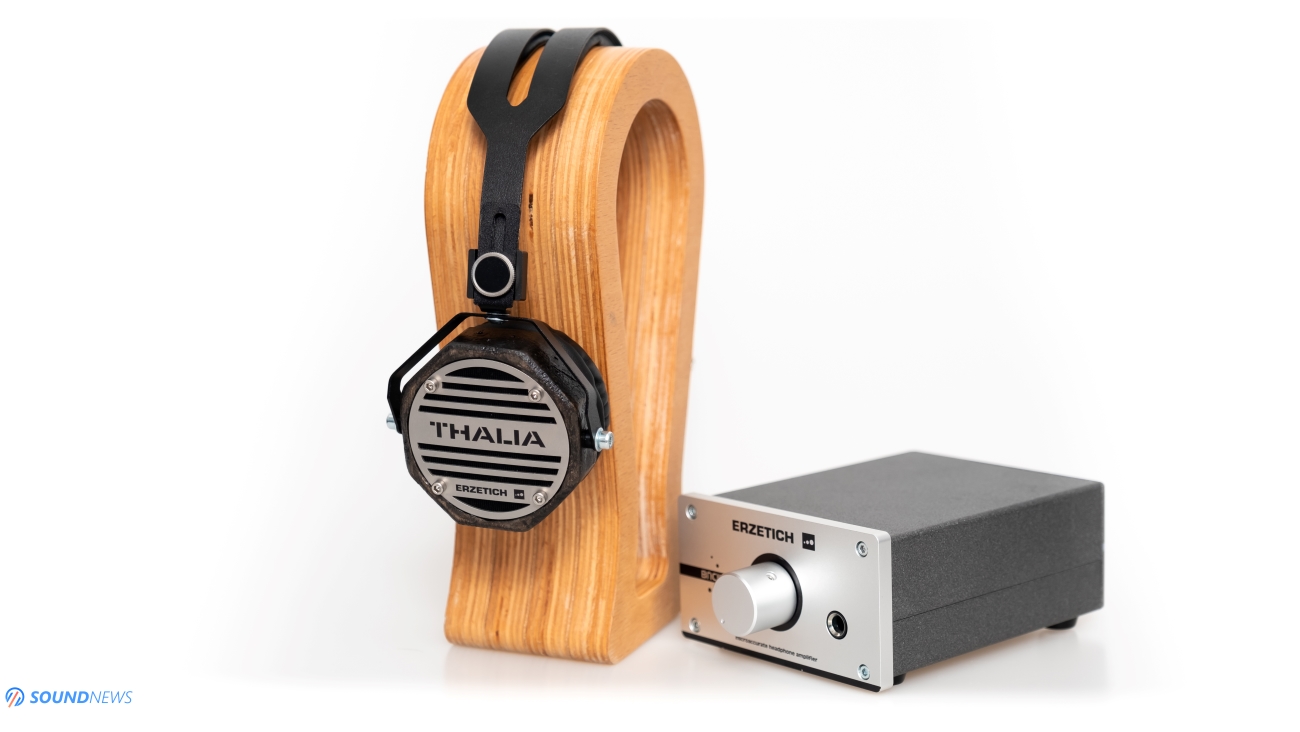
Unboxing a Muse
I’ve got the final production unit that comes with a simple owner’s manual, with a detachable silver-plated OFC cable, a headphone adapter and with a soft-fabric carry pouch.
Build Quality & Looks
When I unboxed and touched them for the first time, I felt that this is not a mass-production headphone built by some machines. You can’t carve linden wood on a machine like that, attention to detail is really high. Since linden wood is not perfect and has markings here and there, every Thalia headphone will be a unique design with unique wooden markings. You can actually check the official Thalia page and see for yourself how much work is needed to finely polish those wooden cups.
I have the Tilia version carved from dark (linden) wood, Erzetich is also offering the Salvage version with wooden cups made from recycled spruce wood. I really appreciate their green approach with animal-free pads, recycled wood and not a single plastic part was used while making them, mother nature is putting its stamp of approval.
The whole headphone structure is reinforced only by nuts and bolts and if something will ever fail it can be replaced. Designed for life, Thalia headphones are fully serviceable to ensure great sound quality year after year. Soft ear-pads are detachable and very easy to remove and put back. After removing an ear-pad you can see their driver assembly and how big is the actual titanium-coated driver.
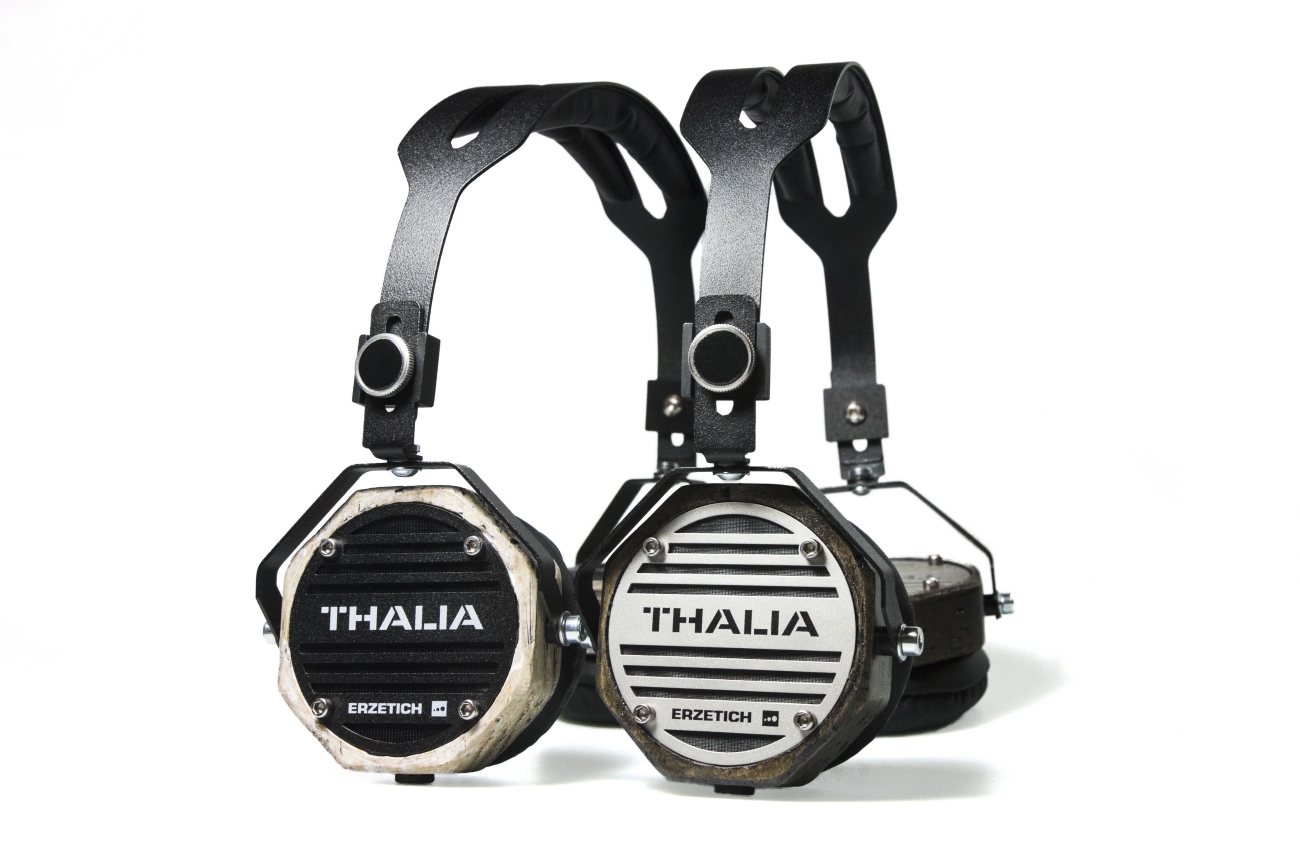
Thalia has again this 100% symmetrical design so any ear-cup can be your left or right, you have the channel markings only on the detachable cable, red colored side will be your right side and the other one will be your left. Cable seems sturdy with 3.5mm connectors on both ends, it is silver-plated OFC one that always sounded good to me, no need to change this one, it is already sturdy and great sounding.
The height adjustment mechanism is very simple and practical, gently unscrew the black metal circle adjust you size and screw it back.
I am bit surprised that Thalia weights only 270 grams, so it will not crush the top of my head, the side pressure is also minimal, they don’t bother me much at all.
Thalia is an On-Ear design and it will not completely hug your ears but will sit on your ears, very much like Momentum On-Ear of HD-25/Amperior by Sennheiser. This type of design has both pluses and minuses. On a plus side you can wear them in hot summer days without having sweaty ears and on the minus side you don’t have the best passive noise attenuation and they might tire you down with that on-ear pressure.
Erzetich decided to make it completely open-back, so obviously the sound will be much bigger, airier and deeper, but it will not cut-off all the sounds of the outside world. If you want to be aware of your surroundings in a crowded city this can even a plus.
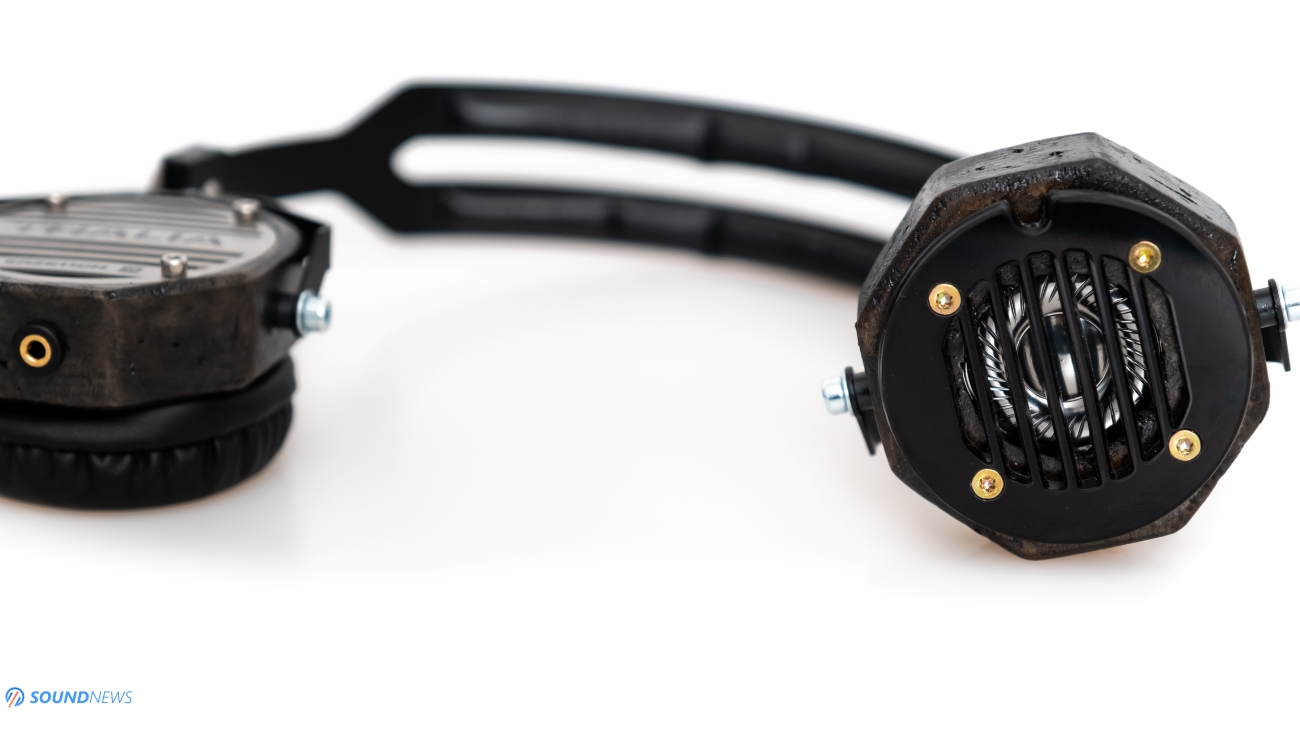
Technology inside
Well, first of all Thalia is a dynamic driver headphone that is titanium coated to improve rigidity and speed of delivery. Driver size is 40 mm, quite big for a portable headphone.
Impedance is a low 32 Ohm, I actually tested few desktop headphone amps with them I am glad that it isn’t super sensitive about the noise-floor of an amplifier. I can’t hear the noise floor of Bacillus, SMSL SP200 or of the Burson Conductor 3.
No sensitivity numbers were given but since I can drive them with my smartphone, it will probably work with majority of mobile sources, a nicer quality source like a dedicated DAP will have no problem driving them, even the super small and affordable xDuoo Link USB Type-C dongle worked like a charm with them.
I’m pretty sure this is the same driver from their €1199 Mania headphones, but smaller in size with a smaller magnet engine and thanks to that it is much easier to drive that should work with a wider variety of sources.
Time to awaken those headphone drivers and see what they can offer.
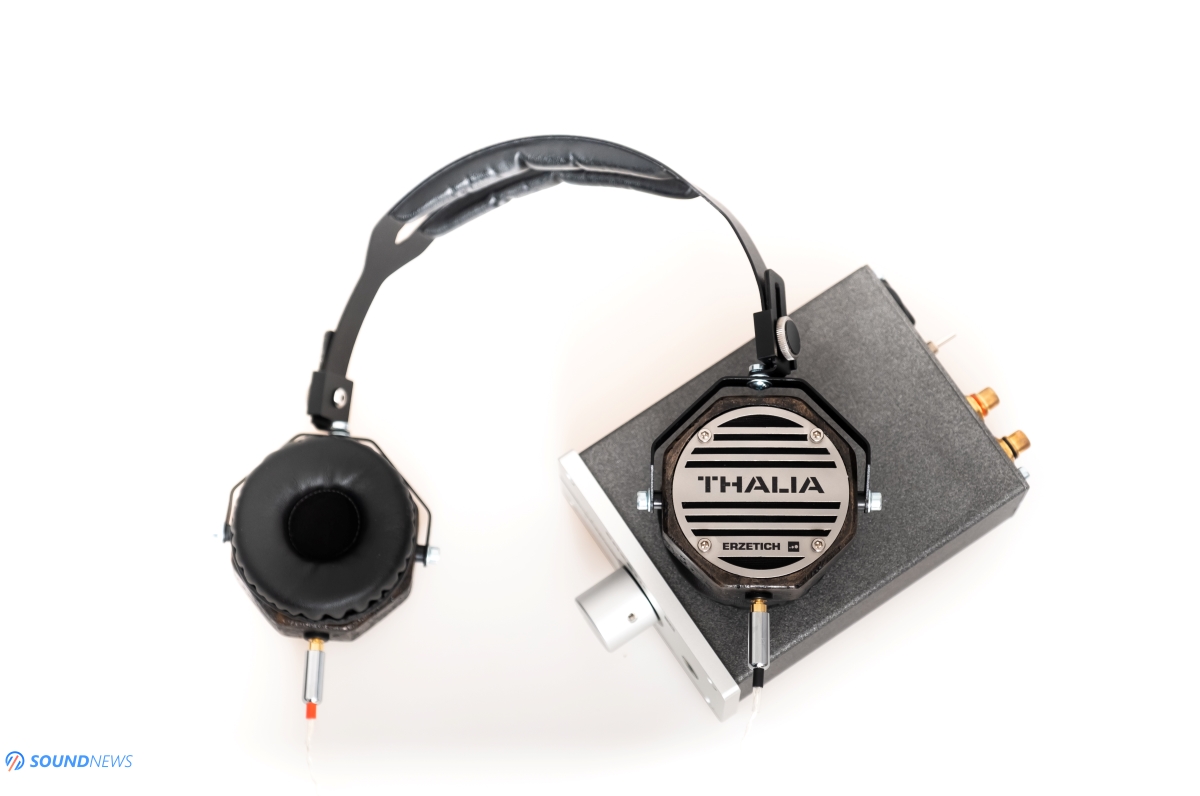
Sound Performance
These ones are not sounding like ordinary portable headphones, everything is farther away from me, wider spread and the decay of the notes is not happening inside my head. It sounds wider, bigger and airier than a Sennheiser Momentum 2 and a Meze 99 Classics, all those are closer, more intimate and rolled-off sounding. Apart from that, there is also a very different approach to music reproduction, I am hearing the bass extra fast, not Mariana Trench deep but punchy and nimble, midrange is super linear and adds just a hint of naturalness, treble is extra crisp, loud and clear. Treble is something I didn’t expect to sound this way, I presume the titanium layer adds more detail and presence in this region. It’s a different tuning, one that cares about musicality and detail retrieval without putting something in the spotlight.
I am actually not shocked that it sounds faster than Meze 99 Classics and Sennheiser Momentum 2 (and 3 for that matter) and has a much better driver control.
I. Measurements
I decided to measure them first, I was mostly curious about their THD, frequency response and spectral decay. Matrix Audio Element X worked as the source, Benchmark HPA4 was the amp and MiniDSP E.A.R.S was the measuring rig for the Thalia.
I used only original headphone compensation (HPN) files for this particular EARS serial number since I feel HEQ (Compensation for flat EQ) is not that close to reality. Since EARS has some really big silicon ears, measuring Thalia was much more difficult than I anticipated. Their open-back and On-Ear design leaks a lot and that hurts their measurement performance. I measured them about 20 times before having a perfect seal and these are my measurements.
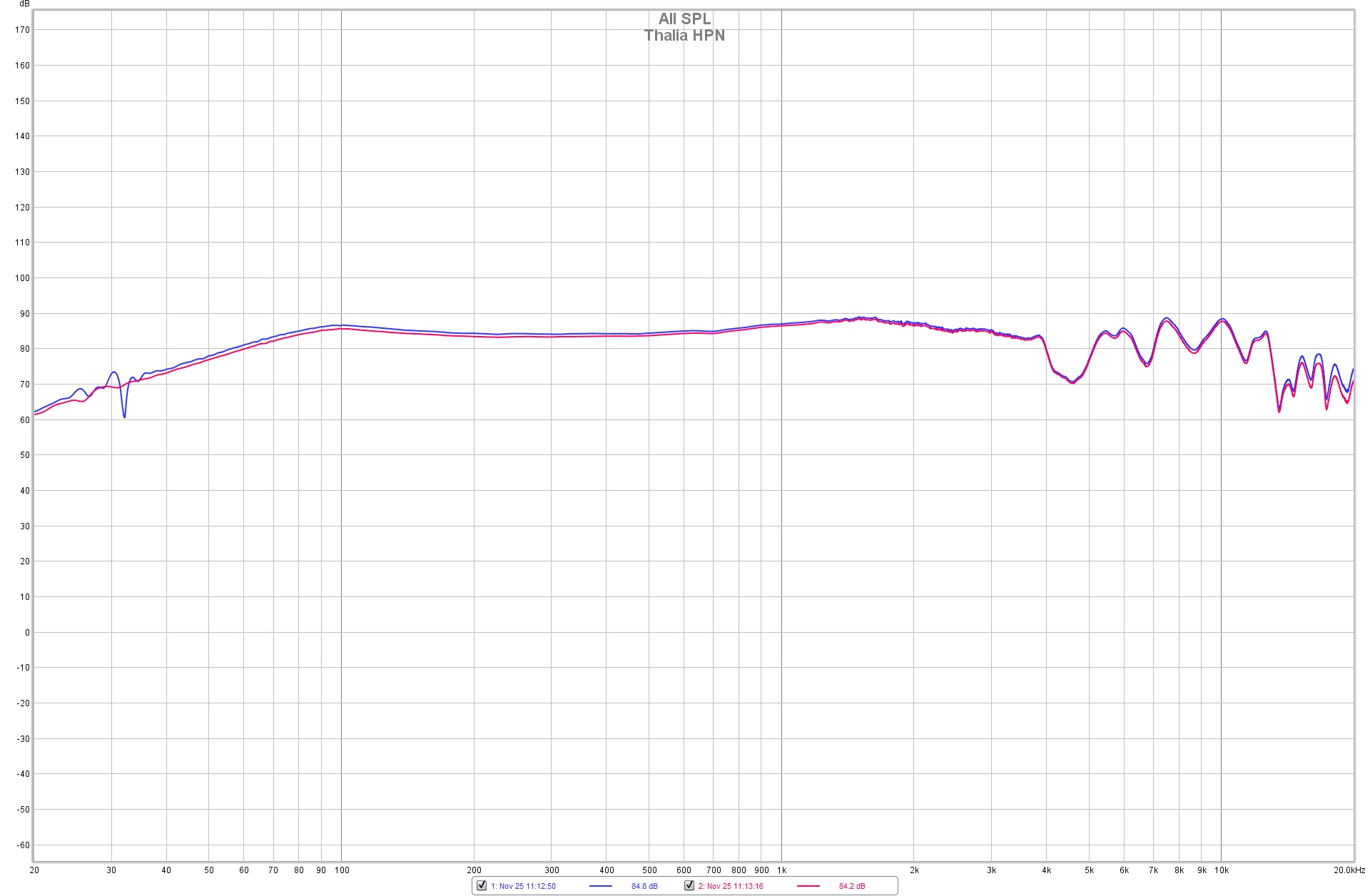
Their RAW frequency response is impressively good. Due to an open-back design the sub-bass took a hit up to 50 Hz, but important thing is that it rolls-off smoothly so I can hear it when my music has it. Thalia can render sub-bass information but not the way bigger planars will do, that is normal behavior for such a small driver and open-back design. I was surprised by the driver matching a lot, they match perfectly, there is just a small ringing in the 34 Hz area in the left channel, everything else is matched to less than 1 dB of difference, impressive!
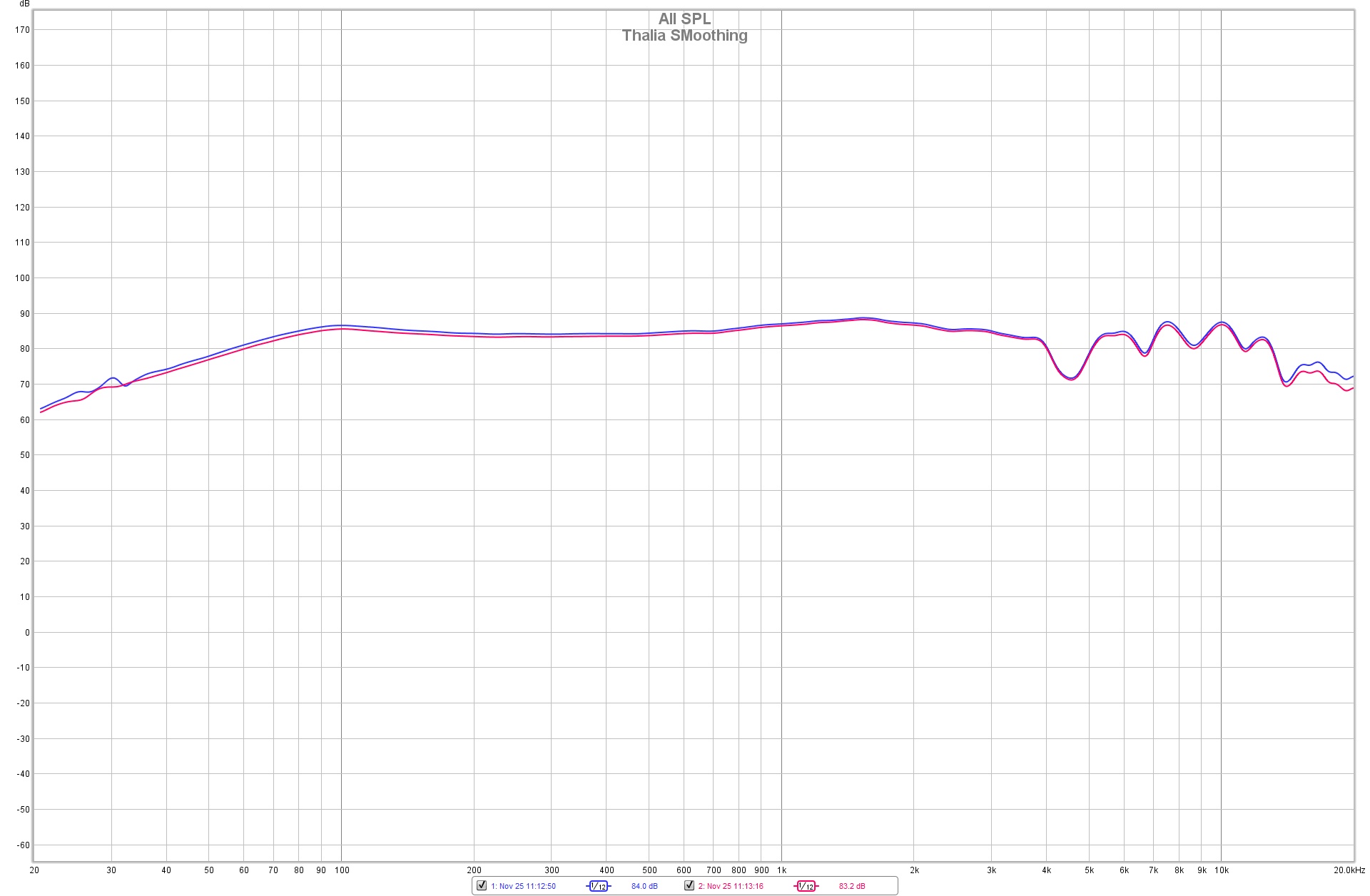
Applying a 1/12 smoothing doesn’t change a lot since Thalia doesn’t have huge drops or rises in the FR. The drop in the 4.5 kHz area is still there and the ones in the top-octave are still present as well.
The drop in the 4.5 kHz actually kills some brightness and makes them more manageable at high volumes and they just work with a wider selection of music. They sound crispy in the treble but not hot or bright.
All in all, Thalia has a quite linear FR with a perfect upper bass and midrange and a crispy but not overdone treble.

As I expected, Thalia has a nice spectral decay and everything happens at the same time, sub-bass is slower a bit, that is normal for a dynamic driver.

Checking out total-harmonic-distortion (THD) you can see that up to 100 Hz it goes north of 1% and starting with 200 Hz it stays at a very respectable 0.1 to 0.2%, all that with a sine wave of 85 dB, pretty good driver behavior.
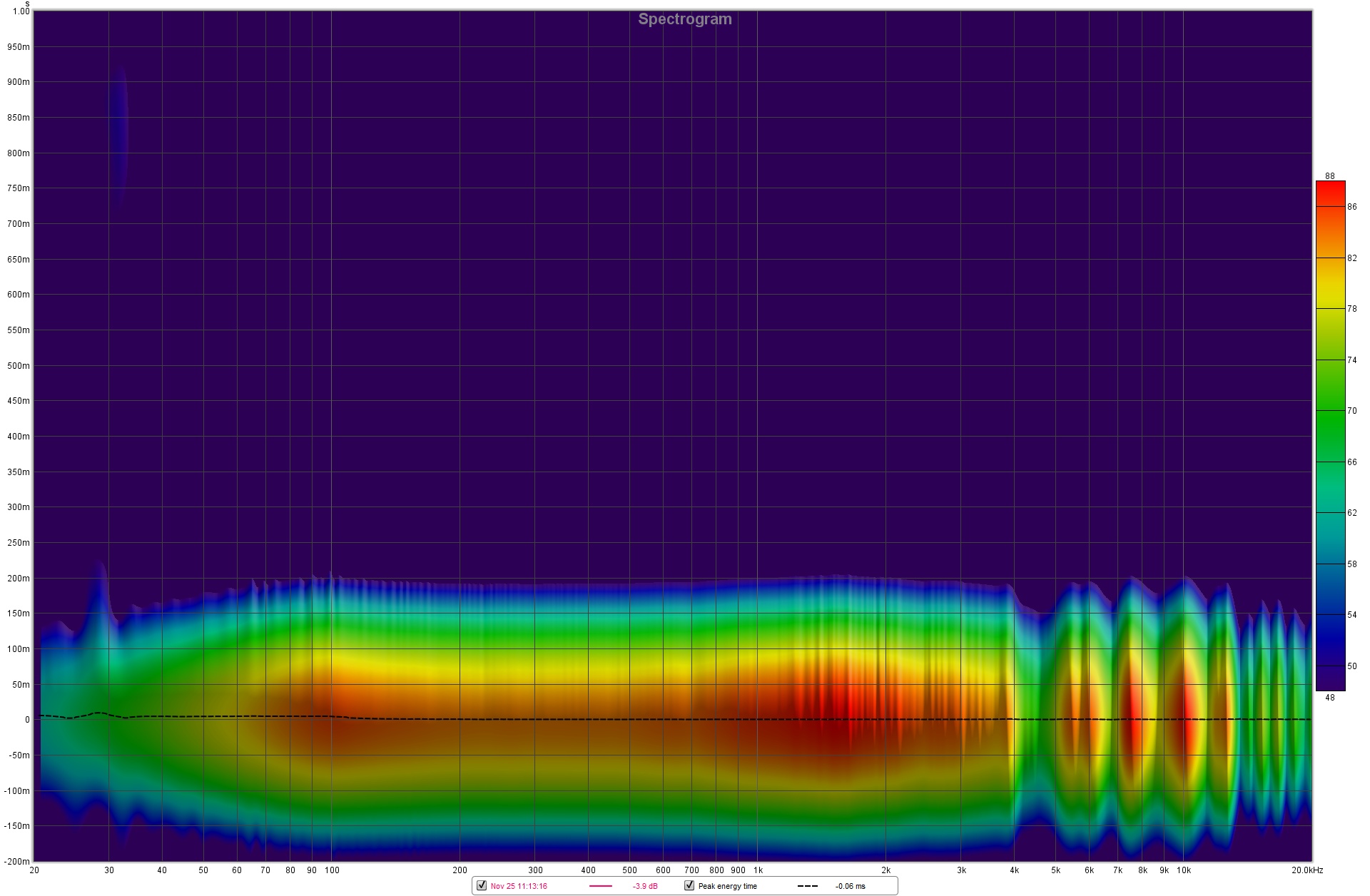
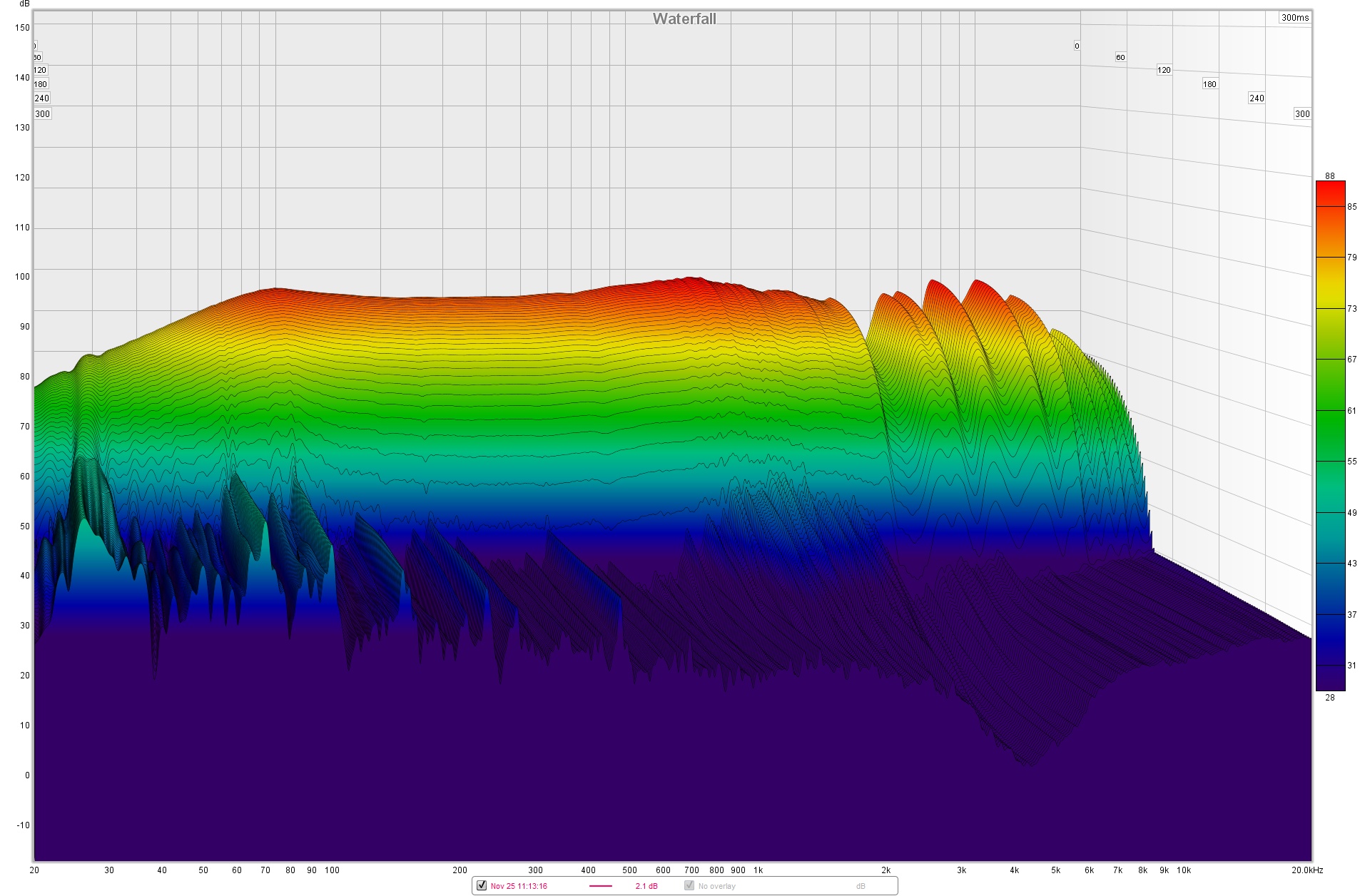
Their spectrogram and waterfall readings show zero leaking, free of any grain even in the bass-departments. I should expect a super clean bass without leaking over everything else. Waterfall shows the hot spots and Thalia has very little of that but most importantly shows how fast Thalia actually is past 500 Hz, just an instant rise and drop of the dynamics.
Both Sennheiser Momentum 2/3 and Meze 99 Classics had worse THD, spectrogram and waterfall readings.
Blaž tunes all his headphones by ear, I can confirm he has a very good hearing since Thalia measures really good and if I am closing my eyes at the sub-bass performance, I have nothing to complain about.

II. Bass
I fired my usual bass tests and I started with Guitarmass by Infected Mushroom. At 0:53 mark I hear it pumping a lot of energy and I hear it slamming and hitting me pretty hard, it carries air but not a lot of it. Quality wise this is an amazing sub-bass performance, quantity wise I wish it carried just a bit more air. Past 50 Hz Thalia are hitting me without mercy, their mid-bass execution is perfect and it makes me thinking more about planar bass and less about slow dynamic-driver type of bass.
Bulls On Parade by R.A.T.M has a really groovy and super present bass-guitar even from the first second of the song. Bass guitars can’t reach super low levels of sub-bass information, so this track sounds a lot like it does on my big headphones. The overall performance is pleasant, very engaging, it moves my body and especially my feet and my head. I was feet tappin’, head bangin’ and smiling for the rest of the song.
Where Thalia loses a bit in terms of ultimate sub-bass presence it makes up in the bass quality department. It has a clean sounding, really detailed and layered type of bass. Even at the 03:00 minute mark I can heard very easily how the bass-guitar amplifier is being engaged with a low intensity hum that can be heard for few seconds.
Warning by Incubus has the bass guitar really outlined and present, if I want I can focus only on it pretty easily. Thalia has a good bass sustain and if needed a longer decay of the bass too as this tune proves it. Thalia is not only about fast executed bass, it can be gentle and smooth sounding too.
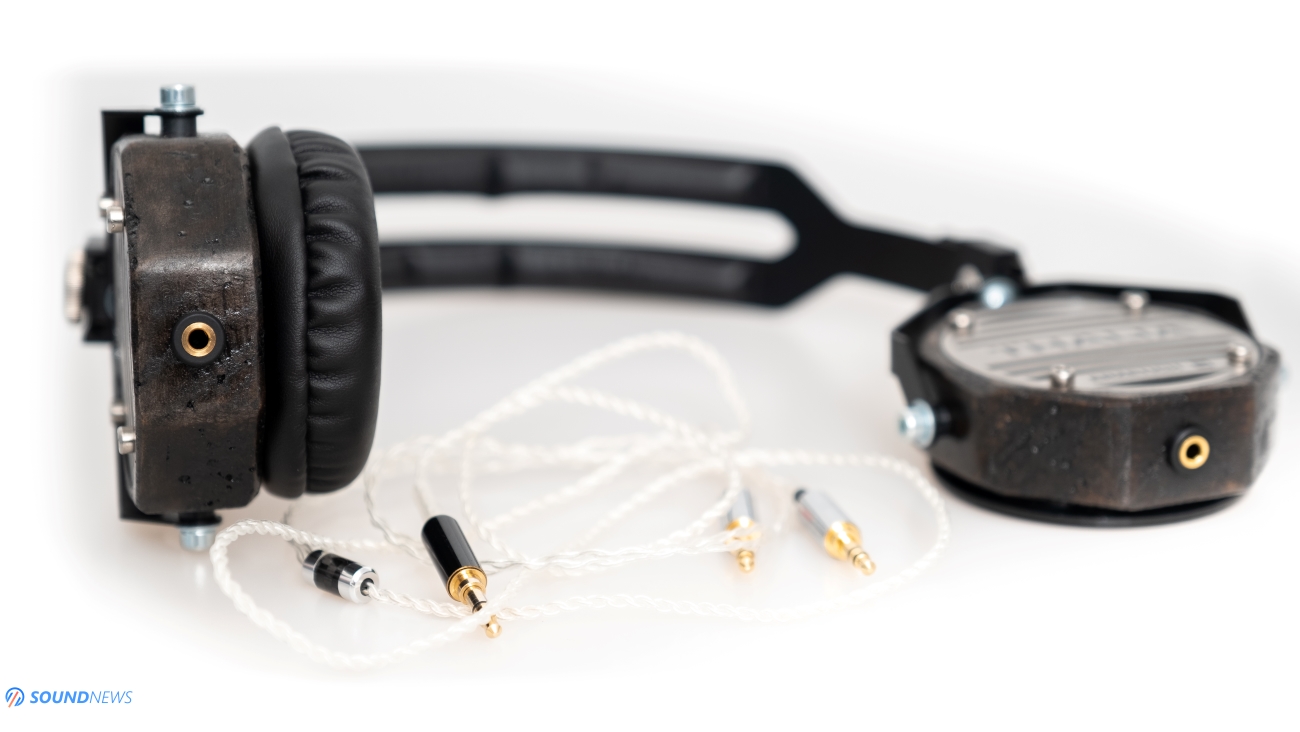
III. Midrange
Thalia is amazing when it comes to midrange and this is actually the best part of Thalia. Listening to some folk where musical instruments feel at home when guitars and drums are meeting flutes, violins, pipes, cimbalom and even accordion (don’t laugh) Thalia transforms itself into a pleasant, engaging and smoother musical creature. It has lot of presence in this region and due to the open-back design everything sounds outside my head and I can listen to those notes individually and focus on every single one. Thalia somehow puts all those instruments on different shelves where I’m just picking any note I want. I am doing all this pretty easily and it sounds closer to bigger desktop headphones than to portables.
Moving to older jazz like Django Reinhardt and while listening to Minor Swing I still feel the smoke flowing in the air and the super grainy presentation, this song just hit its 100th Birthday so be gentle with it. It has tons of hiss and the noise floor is high, Thalia can render all that pretty easily, all those imperfections can’t hide from its gaze. On the other hand, the soul of that recording, the energy of Django’s guitar is oh so sweet and engaging, it always moves me and if it is not, I blame the transducers. Thalia is gentle and smooth on this song and it preserved the soul of this recording, an amazing musical performance if you go past its aging defects.
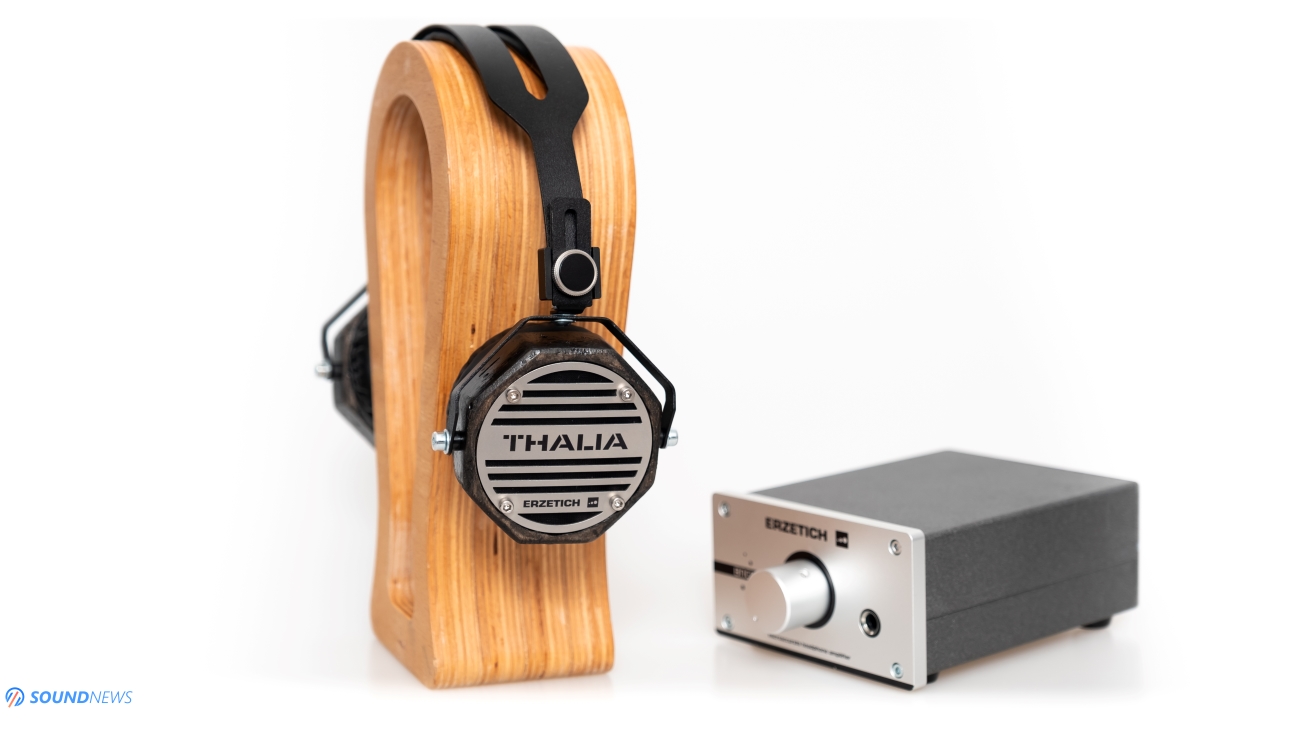
IV. Treble
Thalia is really interesting in the treble; I think it’s due to that drop in the 4.5 kHz region that scares the brightness away in most songs. Truth is, Thalia is very present in this region, has an amazing top-octave and all those sub-sonic treble sounds like bells and cymbals are rendered clear with an exact dose of decay, they don’t linger too much and they don’t disappear too fast to create that fake impact feeling. Apart from that drop, Thalia has it all and listening even to greatest classical recordings of bigger names revealed a clear, defined, technical and detailed treble. You hear all that treble information and you expect that soon some brightness will surely hit you but the more you listen the more you realize that will not happen. Yes, Thalia is detailed but smooth sounding and keeps brightness under control.
Overall, in terms of frequency response Thalia is quite neutral, super extended in the treble area and rolled-off a bit in the sub-bass. Midrange is quite magical and adds a lot in the presence department. Everything sounds clear, defined and muddiness is nowhere to be found.
V. Transient Response
This is a fun chapter as Thalia doesn’t sound like a typical cellulose-driver dynamic headphone, something is going on with these especially when it comes to speed and decay.
Thalia chooses to have a speedier and snappier presentation; it delivers everything in an instant and everything stops at the right moment. Even treble doesn’t rumble too much to create a harsh mess, bass is lightning quick too. Thalia has an agile performance, I’m sure Benchmark HPA4 helped a lot in this area but Thalia sounded almost as fast and engaging directly from my smartphone, so again this is all Thalia and all its tricks under its sleeve. Switching to a Momentum 2 by Sennheiser I have the feeling that my music pulls the brakes, everything slows down, same happened with Meze 99 Classics.
Thalia gets high scores in terms of transient response and decay and if you are into fast energetic music, you’ll very much like this one.

VI. Soundstage & Depth
Thalia is an open-back portable headphone so it is natural for it to sound grander and wider than my other closed-back headphones. With the right track and source Thalia can portray a wide soundscape that jumps outside your head. Soundstage is medium to big in size, it will not outperform my favorite desktop headphones but it is toe to toe with something like Sennheiser HD660S and this is a big compliment to it.
Its stage resembles the one I am hearing in Hifiman Arya, it’s tall but not too wide, its centered and doesn’t go too far away from the right to left. All in all, my music sounds outside my head and I can pick up a musical note in a crowded track quite easily so I have nothing to complain in this area.
Musical notes are flying away but at some point are hitting an imaginary wall, so depth is definitely good and its mostly 3D than 2D sounding.
VII. Detail Retrieval
Since I was picking the guitar amp being engaged at 3:00 mark on Bulls On Parade and feet touching the piano pedal on Moonlight Sonata it is already a clear sign that Thalia can render micro-details and tiny amounts of air moving around that recording/mastering engineers never intended us to hear. It sounds clear and I can hear the start and the stop of any note. The shape and outline of them all is clean and defined. Thalia has more detail information that Sennheiser Momentum 2/3 and more than Meze 99 Classics. It’s a detailed sounding headphone, it even surpassed my €799 Quad Era-1 headphone that I enjoy so much, especially the top-octave is clearer sounding, more defined and never rolled-off. Thalia is also not aggressive sounding so it shows all that micro and macro-detail in a non-aggressive way, I like this approach a lot.
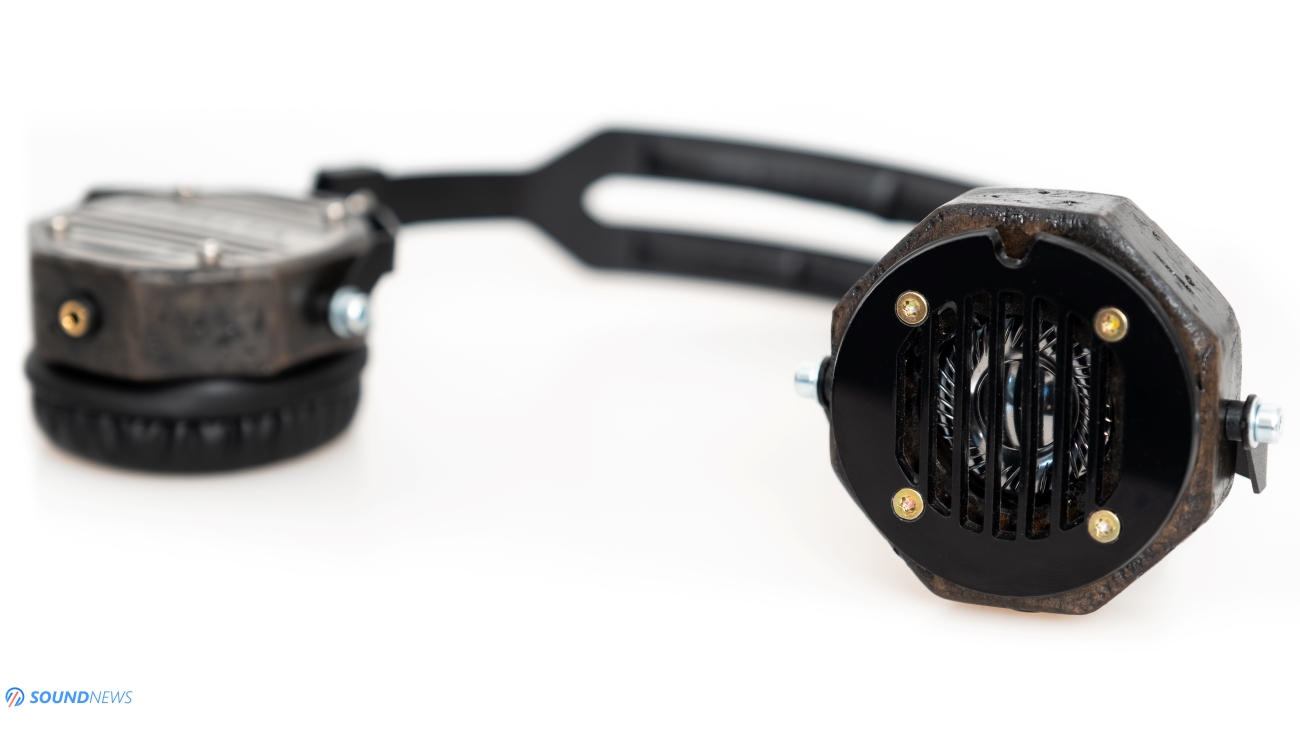
VIII. Dynamics
Thalia can show an increase or decrease in dynamics without breaking a sweat. Its detailed and faster paced approach helped in achieving great dynamics no matter the song is being played. On the right track the difference between a low and high intensity sound can be quite big.
IX. Power Requirements
Thalia is a bit harder to drive than the 113 dB/1V Rms Sennheiser Momentum 2, according to Benchmark HPA4 about 6 clicks higher, so a total of 3 dB more inefficient, so we are dealing with 110 dB per 1V Rms of power. Pretty easy to drive by my standards and even my smartphone could move their drivers at close to maximum volume. If you are using dedicated electronics like a desktop amp or a portable DAP, you should not be concerned about this at all.
X. Matchability
Since Thalia is tuned for a revealing, natural and neutral performance it will pair well with lots of sources. If you need more sub-bass use EQ or just use a warmer sounding source and amplification. It will probably not pair well with bright sounding sources since Thalia is already very good at that. You also don’t need to use an extra speedy or impactful source since Thalia got that covered too, it should work even with tubes if you are into that.
Thalia responds well if I am changing the source and amplification and it will change its sound characteristics too, Thalia can sound completely different in your setup. I used a dead-neutral one so I could know them better.

XI. Comparisons
Erzetich Thalia (€599 or €449 if you preorder it before December 15th 2019) VS Sennheiser Momentum 3 (€349)
Sennheiser uses plastic cups, leather pads and an aluminum frame, it is closed-back and Over-Ear. Thalia is plastic and leather-free and uses wood instead of plastic, it’s open-back and On-Ear. Both were used in wired mode only.
Thalia is clearly more detailed in the midrange and treble area and will offer a lot more in the top-octave, M3 is smoothing all that for a relaxing and rolled-off treble. Sub-bass goes lower on M3 but it is not as fast or as punchy as that of Thalia. Thalia has a faster pace and a better driver control, M3 by comparison is slower sounding with longer decays, with faster paced music something is missing while listening to M3. Thalia will show more micro-detail information and it is grain-free while M3 hides a bit of that and chooses to have a smoother presentation without putting an accent on details.
M3 has a pretty good soundstage for a closed-back design but it is no match for an open-back design where everything just flies farther away from me, I almost never experienced a crowded moment or an up-front presentation on Thalia. M3 is intimate by comparison and not as open or wide.
On other hand M3 wins at passive and active noise attenuation if that is important to you.
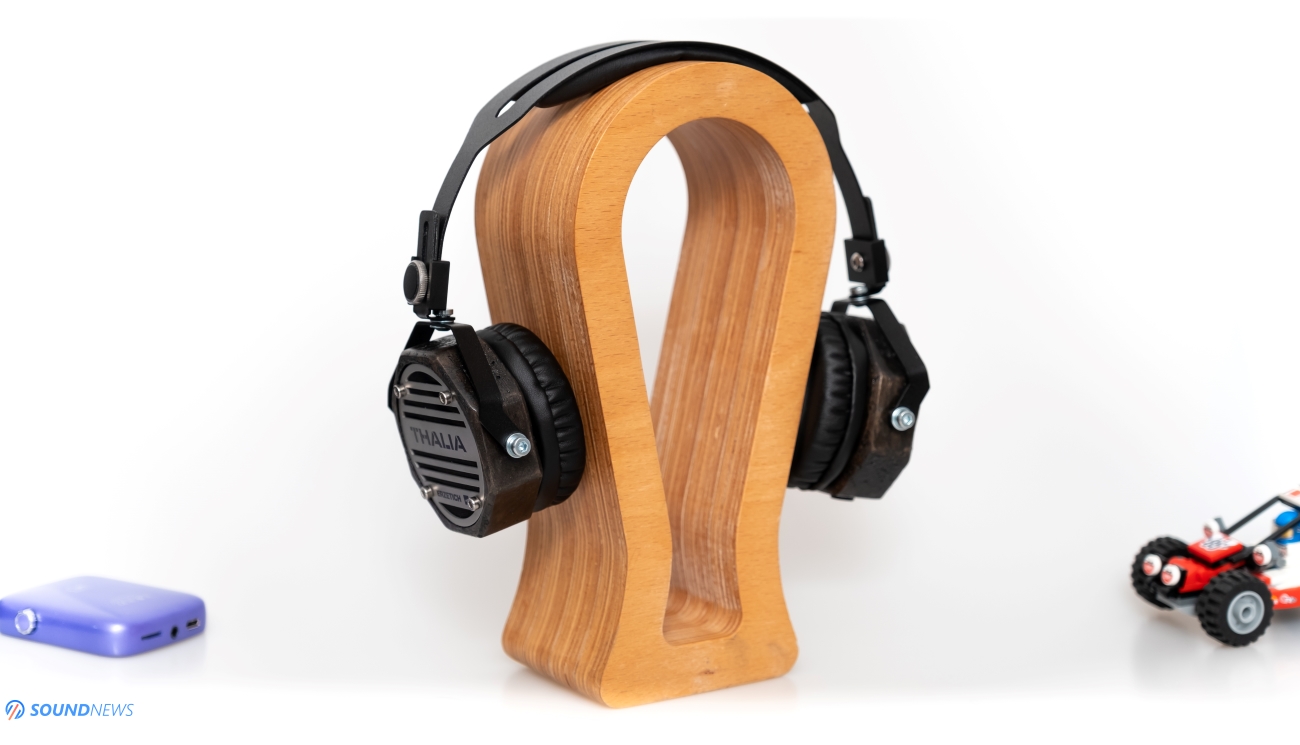
Conclusion
Before I jump into my conclusions, if you decide to purchase the Erzetich Thalia you will be supporting a small company that cares about music, about our environment, you will be supporting creativity, expression, a point of view and a one of a kind hand-build art piece.
Blaž created them for a life-time by using durable materials as metal and wood. In terms of sonics, Thalia lives up to its name with a joyful and festive presentation. They surpassed my other portable headphones in terms of detail retrieval, speed, impact, dynamics, soundstage and lost ground only when it comes to passive noise attenuation.
If you want to get them at a reduced price you should hurry up, you can have them until 15th of December 2019 at €449 (compared to their regular €599 price) by following this link.
PROS:
- Amazing build quality, love the hand-crafted steam-punk look!
- Good comfort level once you adjust them properly
- Impressive depth and pin-point imaging
- Open wide soundstage, good transparency
- Airiest sounding portable headphone I have tested to date
- Good detail retrieval
- Excellent transient response and dynamics
- Linear frequency response
- Can be musical and smooth with the right music
CONS:
- I am not digging the Open-Back and On-Ear design in a portable headphone, but if you do this can even be a plus
ASSOCIATED EQUIPMENT:
- Sources: Xiaomi Mi9T Pro, Corsair One i160
- DACs: Matrix Audio Element X, KECES S3, Burson Conductor 3
- DAPs: FiiO M11, M11 PRO
- Headphone amps: Benchmark HPA4, Erzetich Bacillus, SMSL SP200, Massdrop THX-789
- Full-sized headphones: Hifiman Arya, Quad ERA-1, Sennheiser HD660S
- Portable headphones: Erzetich Thalia, Sennheiser Momentum 2, Momentum 3, Meze 99 Classics
- IEMs: FiiO FH7, Simgot EN700 PRO
- Loudspeakers: KEF LS50W
- Interconnects: QED Reference XLR, Aune AL3 XLR
- Power Cables: Isotek EVO3 Premier (x2)
- Balanced Power Conditioner: PLiXiR Elite BAC 400, KECES BP-600
